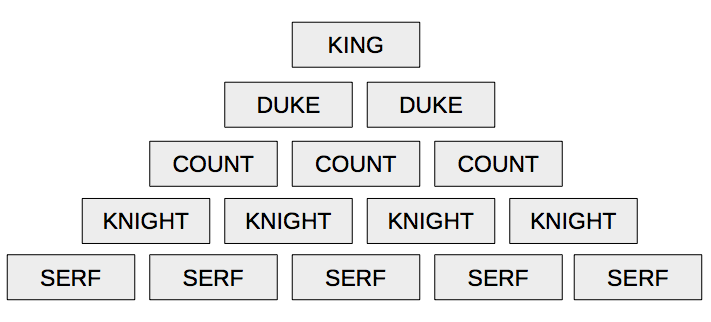Financial Feudalism
Once upon a time—and a fairly long time it was—most of the thickly settled parts of the world had something called feudalism. It was a way of organizing society hierarchically. Typically, at the very top there was a sovereign (king, prince, emperor, pharaoh, along with some high priests). Below the sovereign were several ranks of noblemen, with hereditary titles. Below the noblemen were commoners, who likewise inherited their stations in life, be it by being bound to a piece of land upon which they toiled, or by being granted the right to engage in a certain type of production or trade, in case of craftsmen and merchants. Everybody was locked into position through permanent relationships of allegiance, tribute and customary duties: tribute and customary duties flowed up through the ranks, while favors, privileges and protection flowed down.
It was a remarkably resilient, self-perpetuating system, based largely on the use of land and other renewable resources, all ultimately powered by sunlight. Wealth was primarily derived from land and the various uses of land. Here is a simplified org chart showing the pecking order of a medieval society.
Feudalism was essentially a steady-state system. Population pressures were relieved primarily through emigration, war, pestilence and, failing all of the above, periodic famine. Wars of conquest sometimes opened up temporary new venues for economic growth, but since land and sunlight are finite, this amounted to a zero-sum game.
…click on the above link to read the rest of the article…
